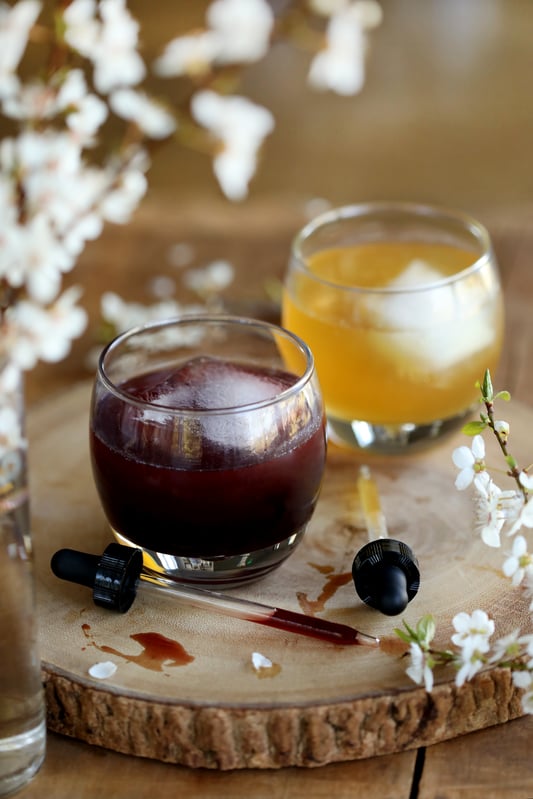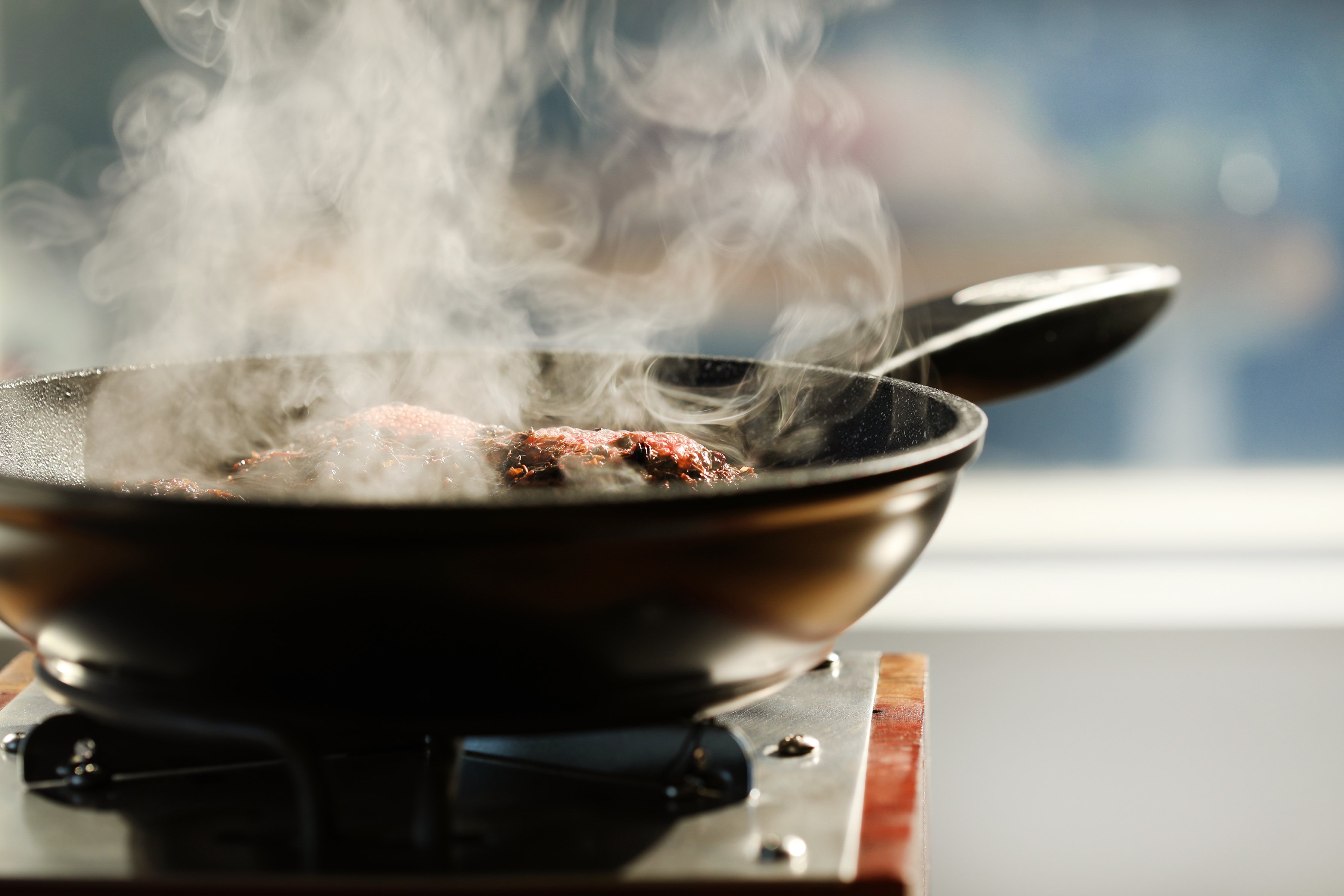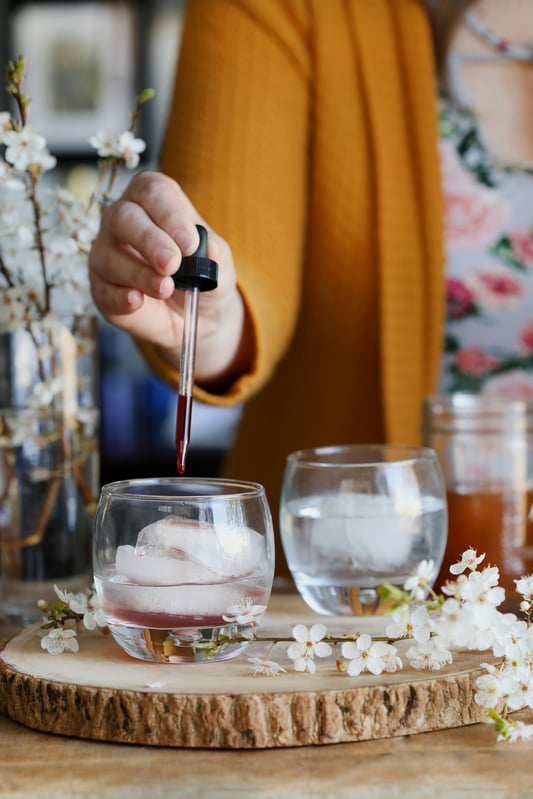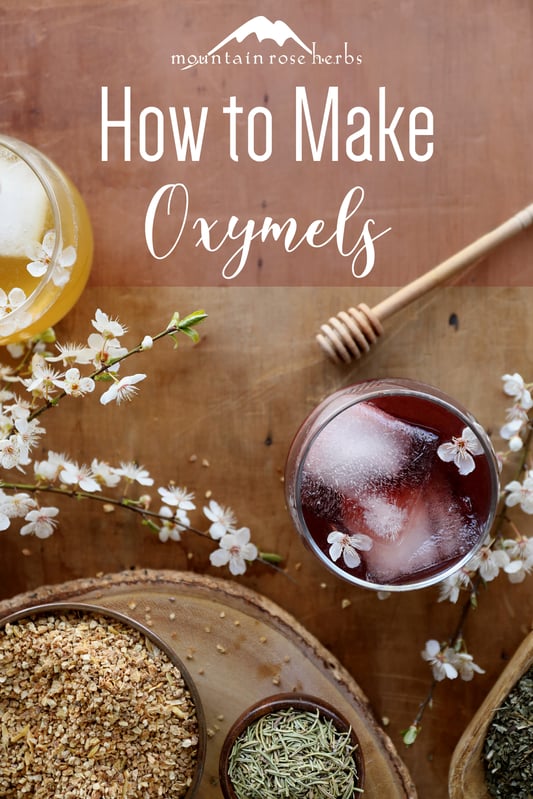In 400 B.C.E., in his On Regimen in Acute Diseases, Hippocrates wrote, “You will find the drink, called oxymel, often very useful…for it promotes expectoration and freedom of breathing.” It’s too bad I didn’t have that definition the first time I saw the word “oxymel,” because I came across the term right about the same time that I was reading the Harry Potter series to my daughter. This might explain why an oxymel sounds to me like something one would whip up in potions class.
The first definition for oxymel that I found didn’t help dispel that magical picture: an oxymel is a type of “herbal elixir”...which puts me in mind of Julie Andrews announcing that “people who get their feet wet must learn to take their medicine” as she spoons out a magical, multi-flavored syrup (rum punch for me, please). While an oxymel is indeed an herbal elixir, not all elixirs are oxymels—for instance, sipping vinegars like fruity shrubs and gingery switchels are delicious herbal elixirs, but they’re not necessarily sweetened with honey, which is a requirement for oxymels. I finally landed on an example of an oxymel that gave me better clarity: when made with honey, fire cider—popularized by esteemed folk herbalist Rosemary Gladstar, and recently the subject of a federal court case over the right to keep traditional remedies trademark-free—is a renowned and beloved immune-supportive oxymel.
So, what is an oxymel exactly?
The ancient Greek word oxymeli translates to “acid and honey.” The simplest definition is an herbal extraction of vinegar and raw honey. Most often, I see people using raw apple cider vinegar, which boasts a host of healthful qualities on its own. Bringing together the acid of apple cider vinegar with the healthful properties of honey is a fantastic way to get the benefits of both, while also extracting and ingesting supportive herbs, particularly pungent ones that aren’t always pleasant to take on their own.
What are the benefits of Oxymels?
Both apple cider vinegar and honey have been used for millennia to help boost the immune system, soothe dry throats, and temper digestive issues. Organic apple cider vinegar is high in acetic acid, and when you use the raw, unfiltered version, you are also getting "mother" strands of proteins, enzymes, and helpful bacteria (similar to what one might enjoy in fermented kombucha tea). Meanwhile, the honey brings soothing qualities and provides germ-fighting properties. So, these two ingredients alone are beneficial to the body, and when you add herbs, you have an incredibly effective method of getting extra herbal support as well.
How to make oxymels
Traditional oxymel recipes from times past tend to use a higher proportion of honey to vinegar: as much as five parts honey to one part vinegar. Depending on your palate and your goals for herbal extraction, you may find this heavy-on-the-honey proportion too sweet for your modern tastebuds—which is why today, most oxymel recipes aim for a more equal balance of vinegar and honey. But one of the beautiful things about oxymels is that you have a lot of room to play with the proportions in order to best match your health and herbal needs.
In this oxymel recipe, I’m going to provide you with a starting point of one part dried herbs to three parts vinegar-and-honey mixture. Feel free to change the proportions to make it your own!
Basic Herbal Oxymel Recipe
Ingredients
- Organic dried herbs of choice (see below for some of our favorites)
- 1 part organic, raw apple cider vinegar
- 1 part raw, local honey
Directions
- Depending on what herbs you’re using, there are several ways to prepare an oxymel. Here are three great options.
Oxymel Method 1: Stir, Shake, Sit
Works well for infusing a variety of dried herbs.
- Fill a pint jar 1/4 full of your choice of herbs.
- Cover with equal parts apple cider vinegar and honey to fill jar.
- Stir to incorporate.
- Wipe any liquid off the rim and top with a tight-fitting plastic lid. Alternatively, place a piece of parchment paper under a metal canning lid and ring to keep the vinegar from touching the metal.
- Shake jar until thoroughly mixed.
- Store jar in a cool, dark place to extract for two weeks. Shake jar at least twice a week to assist in extraction.
- Strain out herbs through a fine mesh strainer, pressing down on the herbs to release as much liquid as possible, retaining liquid and setting herbs aside to compost.
- Pour strained oxymel into glass storage jars or bottles.
- Label and date.
- Store in cool, dark place until ready to use. When stored properly, shelf life is approximately 6 months.
Oxymel Method 2: Vinegar Decoction
Great for non-delicate herbs and hearty roots, or if you’re in a pinch and need an oxymel quickly. This heat-based method is too harsh for most highly aromatic or floral herbs.
- Place the dried herbs and twice as much vinegar as you ultimately want into a pot.
- Bring to a boil. (*Be careful! Apple cider vinegar steam can be very intense—don’t put your face and eyes over the pot or inhale too much vinegar steam!)
- Reduce heat and allow to simmer gently until the liquid is reduced by about half, usually 30 to 40 minutes.
- Remove from heat and set aside to cool to room temperature.
- Strain out herbs through a fine mesh strainer, pressing down on the herbs to release as much liquid as possible, retaining liquid and setting herbs aside to compost.
- Mix the herbal, decocted vinegar with equal parts honey until thoroughly blended.
- Pour oxymel into glass storage jars or bottles.
- Label and date.
- Store in cool, dark place until ready to use. When stored properly, shelf life is approximately 6 months.
Oxymel Method 3: Separately Infuse Honey and Apple cider Vinegar
A nice option for especially delicate herbs.
This is an easy way to make an oxymel if you already have infused honey and/or infused apple cider vinegar in your kitchen pantry or home apothecary.
- Combine equal parts herb-infused honey and herb-infused vinegar in a glass storage jar or bottle.
- Label and date.
- Store in cool, dark place until ready to use. When stored properly, shelf life is approximately 6 months.
How to Enjoy Your oxymels
When you’ve made your first amazing oxymel, try adding some to warm water as a comforting drink to pull you through the sniffle season. Or, use a splash or two to flavor bubbly water on a hot summer day for a refreshing boost. You also might find you like it as a topping on pancakes or added to a vinaigrette for a garden salad.
Our Favorite Herbs for oxymels
- Dandelion
- Elderberries and elderflowers
- Garlic
- Lemon balm
- Hyssop
- Nettle
- Tulsi (Holy Basil): Rama, Krishna, or Vana
- Rosehips
- Turmeric
- Basil
- Elecampane
- Garlic
- Mullein
- Lemon Peel
- Thyme
- Oregano
- Rosemary
Pro Tips
- Remember, babies under 1 year of age should NEVER be given raw honey—no oxymels for the wee ones!
- I like to use local wildflower honey for its complexity of flavor, but if you want a more consistent and neutral flavor, use clover honey.
- You don’t have to use raw apple cider vinegar, but many people believe it brings with it added health benefits. And it is excellent to use in making an alcohol-free extract.
Want to take your vinegar infusions to the next level?
Try This Four Thieves Vinegar for Cooking & Cleaning
You might also enjoy:















